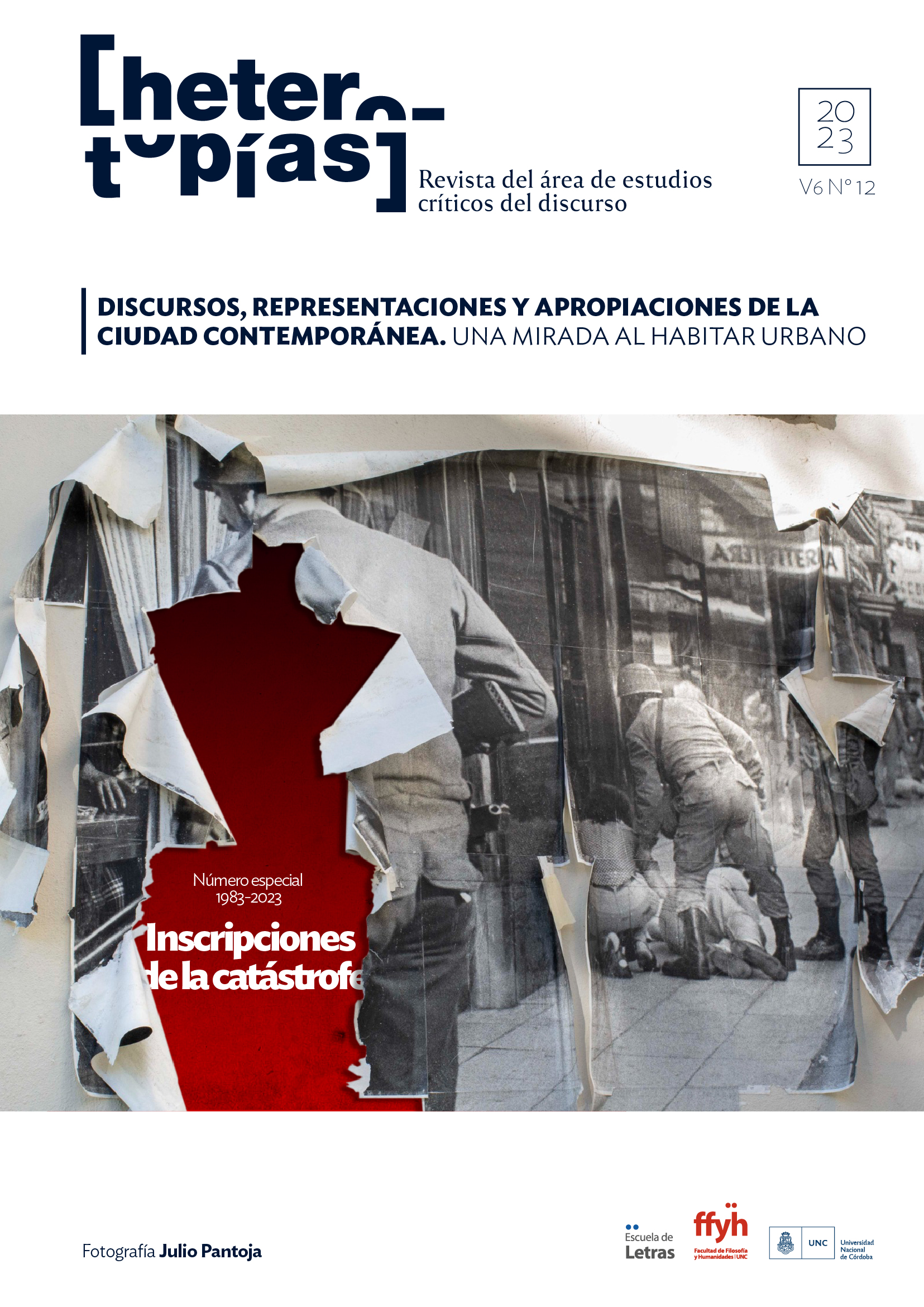Photographic inscriptions: the traces of history on the walls
Main Article Content
Abstract
Working on the relationship between images and history, Didi-Huberman asks about those surfaces that have been witnesses and survivors of atrocities, considering them as the crusts of history. Taking up the idea of the image as surface and crust, as something that has been and is the visible layer of something lived, this article analyses two photographic series that use their own photographic surfaces - and the tensions at play on those surfaces - to think about recent history. These are the book Bruma (2017) by Santiago Porter and the serie Naturalezas by María Eugenia Cerutti. Just as the remnants of history on the walls allow us to explore the past to know it, the unfolding of their materiality expresses the memories of a witnessed history.
Downloads
Article Details

This work is licensed under a Creative Commons Attribution-NonCommercial-ShareAlike 4.0 International License.
Those authors who have publications with this journal, accept the following terms: Those authors who have publications with this journal, accept the following terms:
a. The authors will keep their copyright and guarantee to the journal the right of first publication of their work, which will be simultaneously subject to the Creative Commons Attribution - Non-Commercial - Share Alike (by-nc-sa) Attribution License; no commercial use of the original work or any derivative works is allowed, the distribution of which must be done with a license equal to the one that regulates the original work.
b. Authors may adopt other non-exclusive license agreements for the distribution of the published version of the work (e.g., deposit it in an institutional telematic archive or publish it in a monographic volume) provided that the initial publication in this journal is indicated.
c. Authors are allowed and recommended to disseminate their work through the Internet (e.g. in institutional telematic archives or on their website) before and during the submission process, which may lead to interesting exchanges and increase the number of citations of the published work. (See The effect of open access).
References
Calveiro, P. (2008). Poder y desaparición. Los campos de concentración en Argentina. Buenos Aires, Colihue.
Cortés Rocca, P. (2017). Vestigios del futuro. (S. Porter) Bruma. Buenos Aires, Ediciones Lariviére.
Díaz Belmar, A. (2022). Golpes. Santiago de Chile: Haikén.
Didi-Huberman, G. (2014). Cortezas. Santander: Shangrila Ediciones.
Fortuny, N. (2021). Superficies fotográficas: el resto, el trazo y las imágenes en crisis. Fotocinema. Revista científica de Cine y Fotografía, 22, 305-329. Universidad de Málaga.
Guglielmucci, A. y López G., L. (2019). La experiencia de Chile y Argentina en la transformación de ex centros clandestinos de detención, tortura y exterminio en lugares de memoria. Hispanic Issues On Line, 22, 57–81. Universidad de Minnesota.
Porter, S. (2017): Bruma. Buenos Aires: Ediciones Lariviére.
Porter, S. (2023): Los días nublados. Buenos Aires: Asunción Editora.
Schindel, E. (2003). Desaparición y sociedad. Una lectura de la prensa gráfica argentina (1975-1978). Tesis para obtener el grado de Doctora en Ciencias Políticas y Sociales, Universidad Libre de Berlín.
Travnik, J. (2007). Los restos. Buenos Aires: Colección Fotógrafos Argentinos, Dilan Editores.
